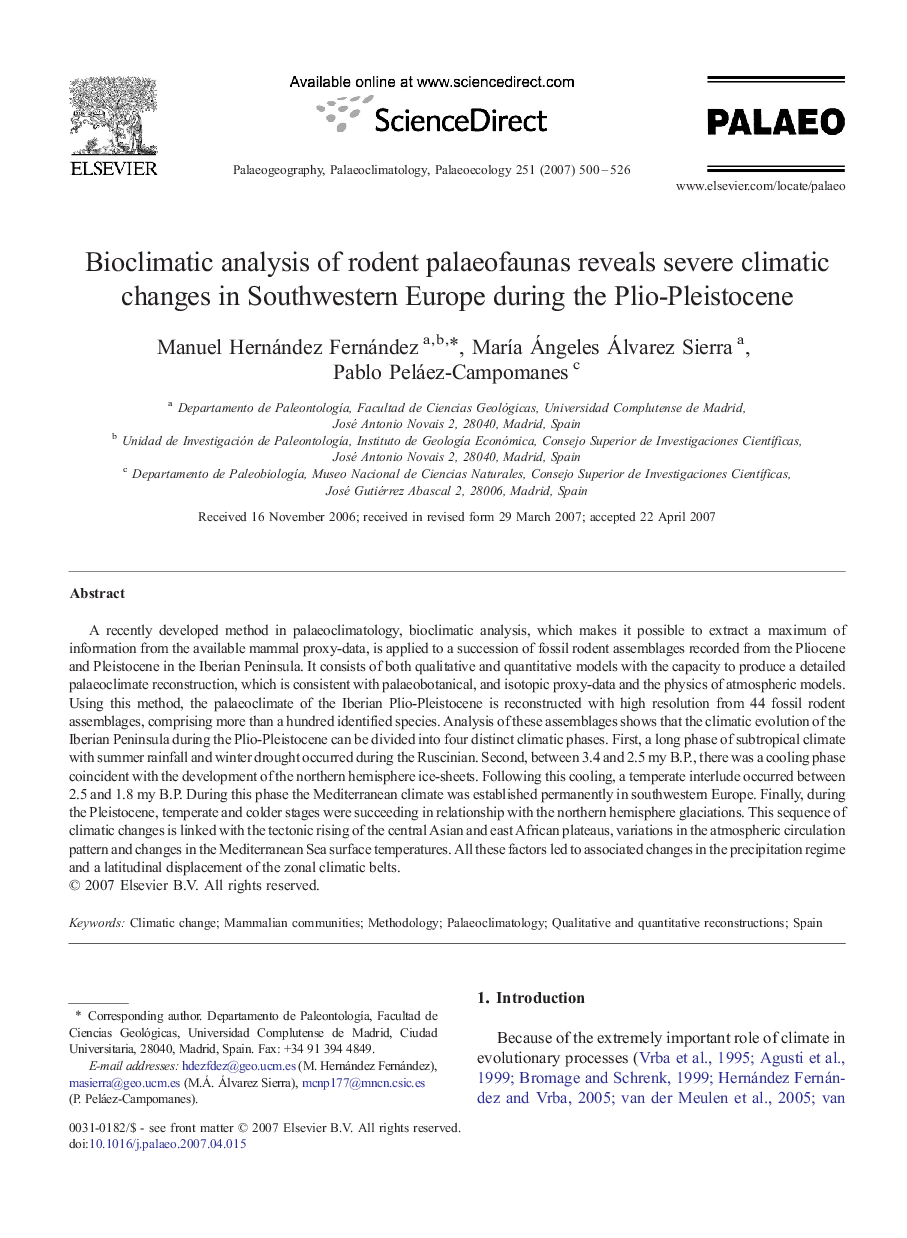| کد مقاله | کد نشریه | سال انتشار | مقاله انگلیسی | نسخه تمام متن |
|---|---|---|---|---|
| 4468897 | 1622348 | 2007 | 27 صفحه PDF | دانلود رایگان |

A recently developed method in palaeoclimatology, bioclimatic analysis, which makes it possible to extract a maximum of information from the available mammal proxy-data, is applied to a succession of fossil rodent assemblages recorded from the Pliocene and Pleistocene in the Iberian Peninsula. It consists of both qualitative and quantitative models with the capacity to produce a detailed palaeoclimate reconstruction, which is consistent with palaeobotanical, and isotopic proxy-data and the physics of atmospheric models. Using this method, the palaeoclimate of the Iberian Plio-Pleistocene is reconstructed with high resolution from 44 fossil rodent assemblages, comprising more than a hundred identified species. Analysis of these assemblages shows that the climatic evolution of the Iberian Peninsula during the Plio-Pleistocene can be divided into four distinct climatic phases. First, a long phase of subtropical climate with summer rainfall and winter drought occurred during the Ruscinian. Second, between 3.4 and 2.5 my B.P., there was a cooling phase coincident with the development of the northern hemisphere ice-sheets. Following this cooling, a temperate interlude occurred between 2.5 and 1.8 my B.P. During this phase the Mediterranean climate was established permanently in southwestern Europe. Finally, during the Pleistocene, temperate and colder stages were succeeding in relationship with the northern hemisphere glaciations. This sequence of climatic changes is linked with the tectonic rising of the central Asian and east African plateaus, variations in the atmospheric circulation pattern and changes in the Mediterranean Sea surface temperatures. All these factors led to associated changes in the precipitation regime and a latitudinal displacement of the zonal climatic belts.
Journal: Palaeogeography, Palaeoclimatology, Palaeoecology - Volume 251, Issues 3–4, 8 August 2007, Pages 500–526